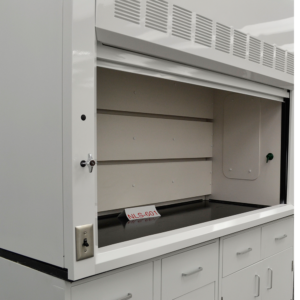Ergonomics has become a hot topic in workplace leadership meetings because it’s a concern for both leaders and employees. The goal of improving products, processes, and systems to reduce errors, boost productivity, and ensure safety and comfort is something every business should strive for. Employees appreciate these objectives, and when implemented correctly, they contribute to the success of a business. Among the various ergonomic hazards in a workplace, one specific aspect to consider is the proper use of a fume hood.
Workplace Inj uries
uries
Work-related MSDs are among the most frequently reported causes of lost or restricted work time. Proper ergonomics can prevent work-related musculoskeletal disorders (MSDs). These injuries or disorders of the nervous system’s soft tissue are caused by:
• Repetitive motions
• Forceful exertion
• Awkward positions
• Applying force
When these conditions are present pain will be felt in the hands, wrists, fingers, forearms, joints, or elbows, leading to any of the most common MSDs:
• Carpal tunnel syndrome
• Tendinitis
• Rotator cuff injuries
• Epicondylitis
• Trigger finger
• Muscle strain
• Low back injuries
When signs or symptoms of MSD are noticed, they should be addressed immediately and amendments made.
Fume Hood Ergonomics
Fume hoods are not the most ergonomically friendly piece of equipment. When using a fume hood, especially an older one, you may experience:
• Constrained knee and leg space
• Contact pressure on the forearms, wrists, knees, and legs
• An awkward posture of the neck and back
• Constrained and unnatural body positions
• Working with your elbows in a winged-out position
• Overreaching
Ergonomic Tips When Using a Fume Hood
So what can be done to reduce your chance of MSDs and make working at a fume hood much more friendly to your health?
• Pull your chair up to the fume hood so that your back is supported by the backrest. Remove the chair arms if they interfere with your ability to get work done.
• Work at elbow height and try not to raise your arms above shoulder height.
• Avoid overreaching by placing materials close to you.
• Avoid resting arms on sharp edges of the fume hood.
• Take breaks to relieve pressure caused by leaning on the front edge of the fume hood.
• Place disposal bins close by and at elbow height.
• If possible, remove drawers and supplies from under the fume hood for extra leg room. When there is limited legroom, standing or partially seated postures will reduce forward bending or reaching, leading to less strain on your back and shoulders.
• Make sure the viewing window is clean to reduce eye strain.
• Support your feet on a foot ring or platform.
• If you must stand at the fume hood, wear proper footwear with good cushioning or use anti-fatigue floor mats.
No one wants to be injured and out of work and no one wants an MSD that could have been prevented, so take note, and implement these tips. When done right, you will have happier employees who are making fewer mistakes, and showing signs of increased productivity, while being safer in the process. It takes time and effort, but better ergonomics leads to better business.
National Laboratory Sales is a full-service new and used lab furniture supplier carrying a full line of fume hoods and cabinets. We are happy to help you with your laboratory needs and encourage good ergonomics in all workplace settings.

